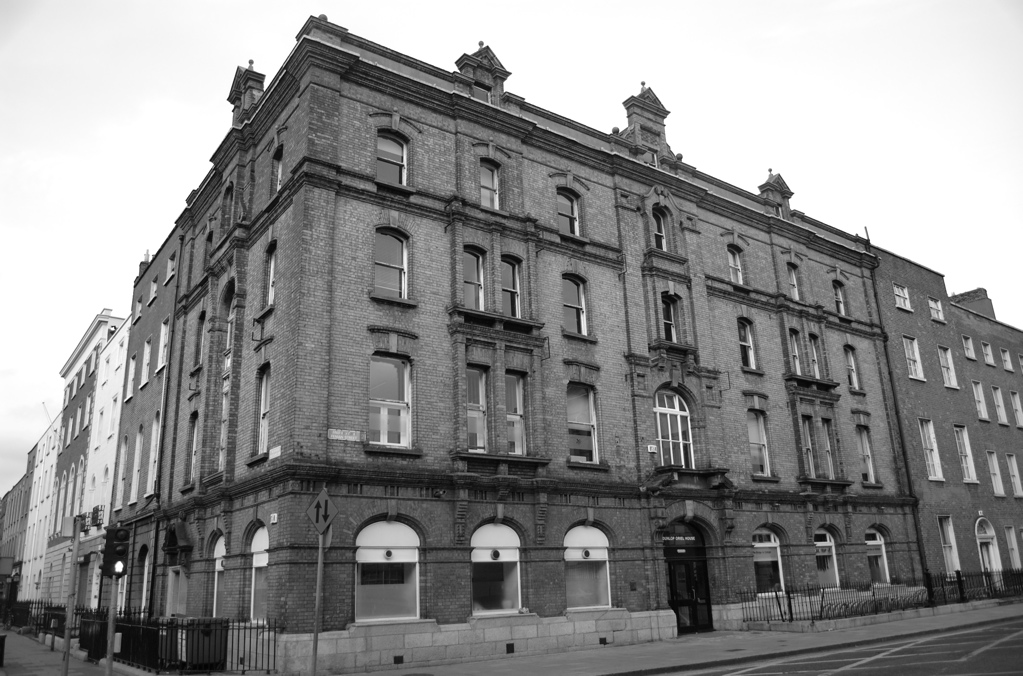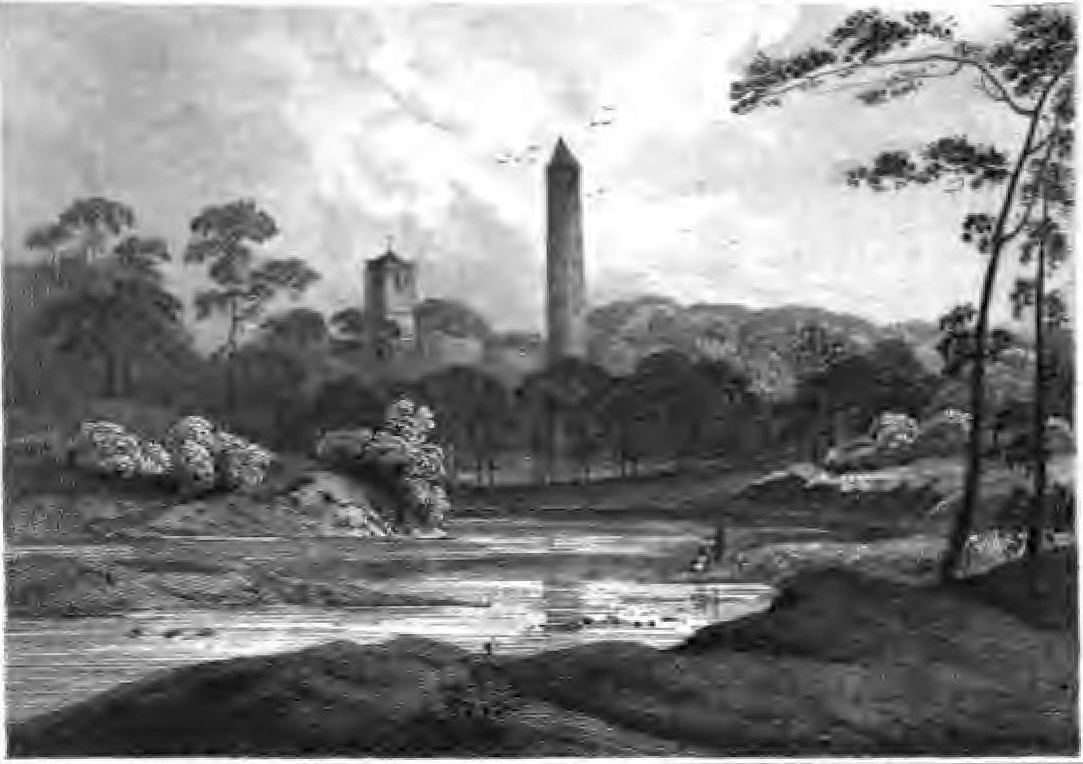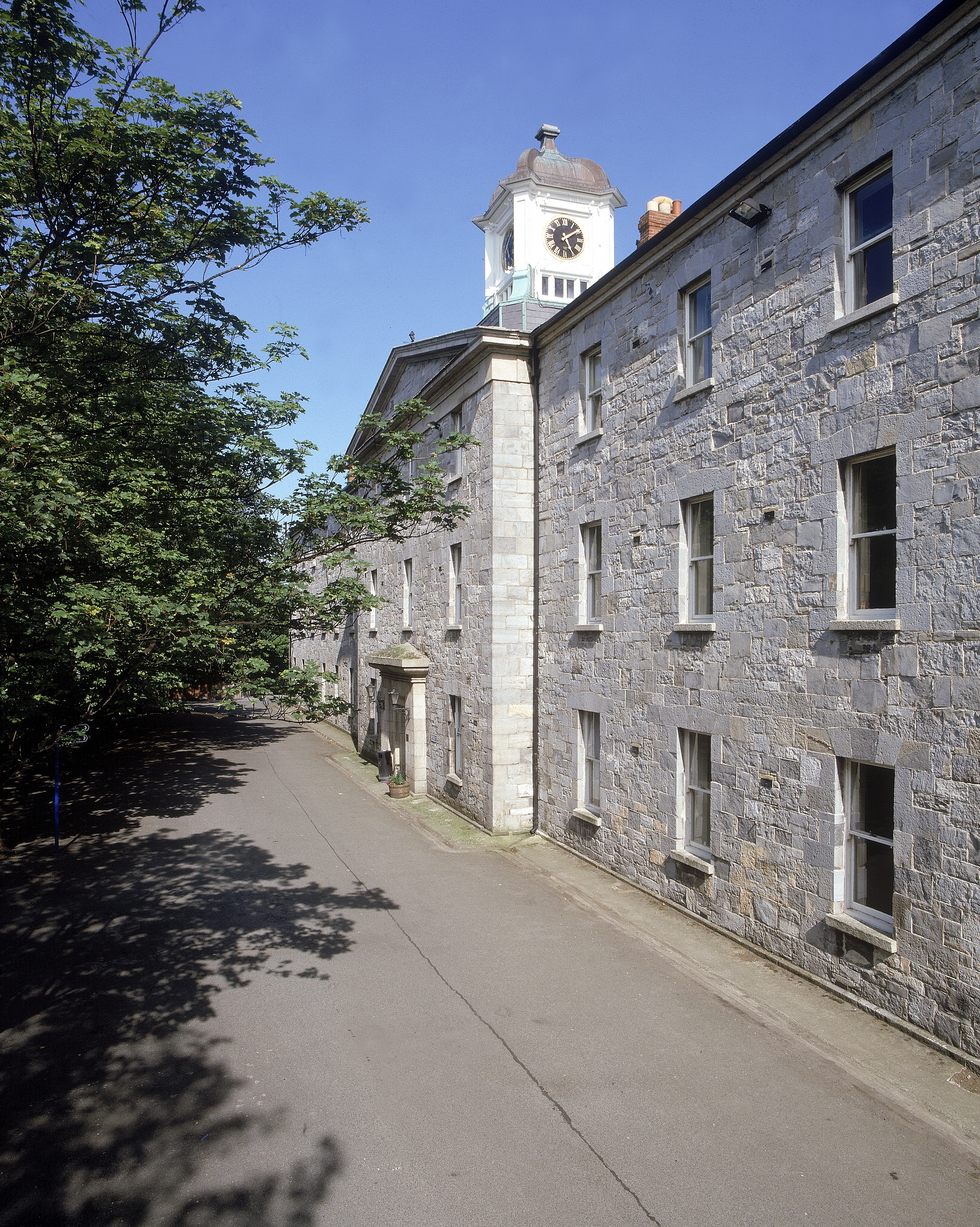|
Criminal Investigation Department (Ireland)
The Criminal Investigation Department (CID) in the Irish Free State was an armed, plain-clothed counter-insurgency police unit that operated during the Irish Civil War. It was organised separately from the unarmed Civic Guard police force. The unit was formed shortly after the truce with the British (11 July 1921) and disbanded in October 1923. Formation The CID was created by Michael Collins and many of its personnel were former Irish Republican Army fighters whom he had commanded during the Irish War of Independence. In particular, a number came from the Squad, a Dublin-based IRA assassination unit under Collins' command. The unit had close links with the Army Intelligence and with a smaller "Protective Corps" which was based in the same building, Oriel House on Westland Row, Dublin. Initially, they were put under the command of Liam Tobin. On 31 July 1922, it was taken out of the control of military intelligence and put under the brief of TD Joseph McGrath. Its commandin ... [...More Info...] [...Related Items...] OR: [Wikipedia] [Google] [Baidu] |
Irish Free State
The Irish Free State ( ga, Saorstát Éireann, , ; 6 December 192229 December 1937) was a state established in December 1922 under the Anglo-Irish Treaty of December 1921. The treaty ended the three-year Irish War of Independence between the forces of the Irish Republic – the Irish Republican Army (IRA) – and British Crown forces. The Free State was established as a dominion of the British Empire. It comprised 26 of the 32 counties of Ireland. Northern Ireland, which was made up of the remaining six counties, exercised its right under the Treaty to opt out of the new state. The Free State government consisted of the Governor-General – the representative of the king – and the Executive Council (cabinet), which replaced both the revolutionary Dáil Government and the Provisional Government set up under the Treaty. W. T. Cosgrave, who had led both of these administrations since August 1922, became the first President of the Executive Council (prime minist ... [...More Info...] [...Related Items...] OR: [Wikipedia] [Google] [Baidu] |
Irish Republican Police
The Irish Republican Police (IRP) was the police force of the 1919–1922 Irish Republic and was administered by the Department for Home Affairs of that government. Foundation The IRP was founded between April and June 1920 under the authority of Dáil Éireann. It was initiated by Richard Mulcahy the IRA Chief of Staff, and Cathal Brugha, Minister for Defence. It was handed over to the Minister for Home Affairs Arthur Griffith and later to his successor Austin Stack. Simon Donnelly, an IRA Staff Officer at GHQ, was transferred to the Department of Home Affairs as Chief of Police. At this time there were only six full-time Republican Police in Dublin city. Donnelly immediately instructed that a paid full-time policeman be appointed to each of the seventy-two IRA Brigade areas. They were chosen by the Brigades, and most though not all were IRA volunteers. The purpose of the IRP was to provide security for the Republican Courts, to enforce their judgements, to put into effect th ... [...More Info...] [...Related Items...] OR: [Wikipedia] [Google] [Baidu] |
Free State Intelligence Department – Oriel House
The Irish Free State Army Intelligence Department – Oriel House Criminal Investigation Department was a department that was responsible for gathering intelligence and enforcement of locations under the control of the IRA as a quasi-police force against those who opposed the newly created Irish Free State (IFS) during the 1920s.This article is based on information culled from extant files obtainable at the National Archives of Ireland and from primary sources at the National Library of Ireland. Other primary sources are the accounts of inquests held on the bodies of Irish Republican Army men and members of Fianna Éireann, in the period 1 August 1922 to 12 October 1923, who were killed in dubious circumstances. At least twenty-five Irish republicans were assassinated in County Dublin during the period that the Oriel House CID was in existence, from early 1922, when under the control of the Free State Army Intelligence Department and later under the Ministry of Home Affairs, to ... [...More Info...] [...Related Items...] OR: [Wikipedia] [Google] [Baidu] |
Special Detective Unit
, headquarters = Harcourt Street, Dublin (D2) , formed = as the Criminal Investigation Department (CID) , preceding1 = Garda Special Branch , preceding2 = , jurisdiction = Ireland , employees = Undisclosed~ 300 , budget = Undisclosed (part of ''Garda Síochána'' budget, €1.34 billion in 2014) , minister1_name = Helen McEntee, TD , minister1_pfo = Minister for Justice , chief1_name = Drew Harris , chief1_position = Garda Commissioner , chief2_name = John O'Mahoney , chief2_position = Assistant Commissioner of Crime and Security , parent_agency = Crime & Security Branch '' Garda Síochána'' , website Official website The Special Detective Unit (SDU) ( ga, Aonad Speisialta Bleachtaireachta) is the main domestic security agency of the '' Garda Síochána'', the national police force of Ireland, under the aegis of the Crime & Security Branch (CSB). It is the primary counter-terrorism and counter-espionage investigative unit within the state. The Special De ... [...More Info...] [...Related Items...] OR: [Wikipedia] [Google] [Baidu] |
Dublin Metropolitan Police
The Dublin Metropolitan Police (DMP) was the police force of Dublin, Ireland, from 1836 to 1925, when it was amalgamated into the new Garda Síochána. History 19th century The Dublin city police had been subject to major reforms in 1786 and 1808.Stanley H. Palmer, ' Drummond, Thomas (1797–1840)', Oxford Dictionary of National Biography, Oxford University Press, 2004; online edn, Jan 2008 Organised rural policing in Ireland began when Robert Peel, then Chief Secretary for Ireland, created the Peace Preservation Force in 1814. This rudimentary paramilitary police force was designed to provide policing in rural Ireland, replacing the 18th century system of watchmen, baronial constables, revenue officers and British military forces. Peel went on to found the London Metropolitan Police. In 1822, a new Act created four improved "County" Constabularies, whose organisation was based around the traditional provinces of Ireland. 1836: reform In 1836, the county constabularies wer ... [...More Info...] [...Related Items...] OR: [Wikipedia] [Google] [Baidu] |
Executions During The Irish Civil War
The executions during the Irish Civil War took place during the guerrilla phase of the Irish Civil War (June 1922 – May 1923). This phase of the war was bitter, and both sides, the government forces of the Irish Free State and the anti-Treaty Irish Republican Army (IRA) insurgents, used executions and terror in what developed into a cycle of atrocities. From November 1922, the Free State government embarked on a policy of executing Republican prisoners in order to bring the war to an end. Many of those killed had previously been allies, and in some cases close friends (during the Irish War of Independence 1919–1921), of those who ordered their deaths in the civil war. In addition, government troops summarily executed prisoners in the field on several occasions. The executions of prisoners left a lasting legacy of bitterness in Irish politics. The use of execution by the Irish Free State in the Civil War was relatively harsh compared to the recent British record. In contra ... [...More Info...] [...Related Items...] OR: [Wikipedia] [Google] [Baidu] |
Oriel House
Oriel House (previously known as Oriel Court) is a hotel in the west end of the town of Ballincollig, County Cork, Ireland. It was built early in the 19th century to house administrating officers of the Ballincollig Gunpowder Mills site. Hosting a number of other businesses after the mills closed, in 1983 it was converted to operate as a hotel by its then owner William (Bill) Shanahan. The hotel was sold in 2003, further developed in 2006, and underwent another change of ownership in 2014. History Construction Charles Henry Leslie, a Cork banker, built Ballincollig Gunpowder Mills in 1794, though Oriel House itself wasn't built until sometime after this. Oriel House was built early in the 19th century by the Board of Ordnance following their takeover of the mills site. Originally built as three houses for the administrating officers of the Gunpowder Mills, it was not known as Oriel House until some time later. Mr. Charles Wilkes, who was a superintendent in the Gunpowder Mi ... [...More Info...] [...Related Items...] OR: [Wikipedia] [Google] [Baidu] |
Thomas Derrig
Thomas Derrig ( ga, Tomás Ó Deirg; 26 November 1897 – 19 November 1956) was an Irish Fianna Fáil politician who served as Minister for Lands from 1939 to 1943 and 1951 to 1954, Minister for Education from 1932 to 1939 and 1940 to 1948 and Minister for Posts and Telegraphs in September 1939. He served as a Teachta Dála (TD) from 1921 to 1923 and 1927 to 1957. Early life and career Derrig was born on 26 November 1897, in Westport, County Mayo, the son of Patrick Derrig and Winifred Derrig (née Sammon). He was educated locally and later at University College Galway. During his time in college he organised a corps of the Irish Volunteers. After the 1916 Easter Rising he was arrested and imprisoned, and sent to the prisons of Woking, Wormwood Scrubs and Frongoch internment camp. He was arrested in 1918, and was accused of attempting to disarm a soldier. He was sentenced to five months imprisonment by a court in Belfast. When he was released, he supported Joseph MacBride ... [...More Info...] [...Related Items...] OR: [Wikipedia] [Google] [Baidu] |
Noel Lemass
Noel Thomas Lemass (14 February 1929 – 13 April 1976) was an Irish Fianna Fáil politician who served as Parliamentary Secretary to the Minister for Finance from 1969 to 1973. He served as a Teachta Dála (TD) for Dublin South-West from 1956 to 1976. Early life Born in Dublin in 1929, Lemass was the son of Seán Lemass, a Fianna Fáil TD, and Kathleen Lemass (née Hughes). He was named after his uncle, a victim of the Irish Civil War in the early 1920s. Lemass was educated at Catholic University School, Leeson Street in Dublin and later at Newbridge College in County Kildare. Against his father's wishes, rather than attend university, he undertook business training and later becoming an executive member and branch secretary of the Irish Commercial Traveller's Association. Political career Lemass followed his father into politics in 1955, when he was elected to Dublin City Council. He was elected to Dáil Éireann in a by-election in Dublin South-West the following yea ... [...More Info...] [...Related Items...] OR: [Wikipedia] [Google] [Baidu] |
Clondalkin
Clondalkin ( ; ) is a suburban town situated 10 km south-west of Dublin city centre, Ireland, under the administrative jurisdiction of South Dublin. It features an 8th-century round tower that acts as a focal point for the area. Clondalkin forms part of the Dublin Mid-West Dáil constituency. Clondalkin is also the name of a civil parish in the ancient barony of Uppercross, and is also used in relation to some local religious parishes. History Prehistory Neolithic tribes first settled in the area around 7,600 years ago, taking advantage of the site's favourable location on the River Camac, overlooking the River Liffey and the inland pass between the mountains and the river. Evidence of the presence of the Cualann Celtic people (an early tribe possibly noted on as the Cauci on Ptolemy's world map) can be found in various mounds and raths. Christian era Clondalkin is believed to have been founded by Saint Cronan Mochua as a monastic settlement on the River Camac ... [...More Info...] [...Related Items...] OR: [Wikipedia] [Google] [Baidu] |
Drumcondra, Dublin
Drumcondra () is a residential area and inner suburb on the Northside of Dublin, Ireland. It is administered by Dublin City Council. The River Tolka and the Royal Canal flow through the area. History The village of Drumcondra was the central area of the civil parish of Clonturk, and the two names were used equally for the religious and civil parishes, but the modern suburban district of Drumcondra also encompasses the old Parish of St. Mary. Clonturk had been an alternative name for Drumcondra and the wider area for some time. The Cat and Cage Pub, on the corner of Drumcondra Road and Church Avenue, was the site of an old postal stop and the point at which rebels, during the 1798 rebellion, seized a postal cart in order to signal to others in North County Dublin to revolt. The southern stretch of the Slige Midluachra passed through Drumcondra and on into the City where it crossed the Liffey at a location known as the "ford of the hurdles". The present-day Drumcondra main ro ... [...More Info...] [...Related Items...] OR: [Wikipedia] [Google] [Baidu] |
Griffith Barracks
Griffith Barracks ( Irish: ''Dún Uí Ghríofa'') is a former military barracks on the South Circular Road, Dublin, Ireland. History The site, which had been known as Grimswoods Nurseries, was developed as a remand prison, designed by Francis Johnston to relieve pressure on the Newgate Prison, Dublin and completed in 1813. On the reorganisation of the government following Thomas Drummond's appointment in 1835 as Under-Secretary for Ireland, it became a male penitentiary known as the Richmond Bridewell. The motto above the door read ''Cease to do evil; learn to do well''. In 1844 it was linked with Catholic emancipation and the subsequent movement for Repeal of the Act of Union: one of its most famous occupants was the Liberator, Daniel O'Connell. Prominent Irish Nationalist leaders such as William Smith O'Brien, Thomas Francis Meagher (later Acting Governor of Montana) and James Stephens (founder of the IRB) were among its famous historical prisoners. Another distinguish ... [...More Info...] [...Related Items...] OR: [Wikipedia] [Google] [Baidu] |

.jpg)



